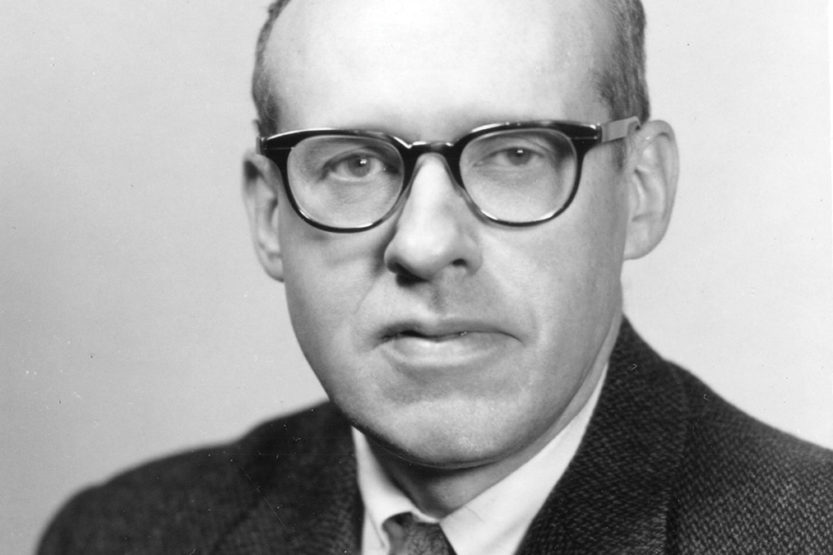Ingenious: Sonic surgery
 Former UI Professor of Physics William J. Fry (pictured) and his brother, Francis Fry, were pioneers in the field of therapeutic ultrasound. (Image courtesy of UI Archives)
Former UI Professor of Physics William J. Fry (pictured) and his brother, Francis Fry, were pioneers in the field of therapeutic ultrasound. (Image courtesy of UI Archives) Some called it “sonic surgery,” but William J. Fry described it as “surgery by sound.”
Fry, a UI professor of physics, was one of the first to develop a system using ultrasound for surgical procedures. And it all started in a UI laboratory deep underground.
When World War II ended, Fry came to Illinois and founded the Bioacoustics Research Laboratory in 1946. However, because of space limitations on campus, he had to locate the laboratory in the steam tunnels beneath the Electrical Engineering Building.
Thanks to the results of the group’s research, Fry and his brother, Francis Fry, also a member of the UI Bioacoustics Lab, are considered pioneers in the thera-peutic uses of ultrasound. They created the first focused ultrasound device that could destroy diseased brain tissue without harming surrounding tissue.
Today, high-intensity focused ultrasound is an approved procedure to treat uterine fibroids in the U.S.; it’s also being studied as a way to destroy tumors in several types of cancer. In 2015, the FDA approved the first ultrasound system for early-stage prostate cancer.
Like a magnifying glass that focuses light energy, HIFU focuses ultrasound energy to heat and destroy diseased tissue. William’s ultrasound “transducers” had pinpoint accuracy. The brothers continued to refine the instruments after William founded the Interscience Research Institute in Champaign in 1957.
Their work caught the attention of a professor of neurosurgery at the University of Iowa who was interested in this new form of surgery. The Frys’ instruments were then used in the first ultrasound surgeries, performed on patients in Iowa suffering from neurological disorders, particularly Parkinson’s disease. More successful surgeries followed, garnering international attention, including an article in Time magazine.
The Fry brothers also were among the first to see ultrasound’s potential use as a noninvasive imaging technique—a standard practice today. In addition, they explored the idea of a mechanical heart and developed an early prototype.
When William passed away in 1968 at age 49, his brother was left to continue the ultrasound work. Francis was not the only Fry to carry on the legacy. William’s wife, Elizabeth Kelly-Fry, was an early member of the UI Bioacoustics Research Lab. In 1968, she led the team that developed the first computer-controlled ultrasound breast examination system, according to her January 2016 obituary in the Champaign-Urbana News-Gazette.
Sources: The Daily Illini, March 4, 1955; News-Gazette, Jan. 5, 2016; Courier-Journal (Louisville, Ky.), Nov. 12, 2015; and the University of Illinois Archives

